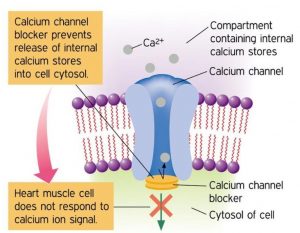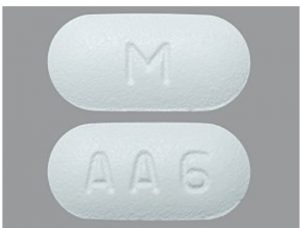53 6.6 Future Directions: Atorvastatin combination therapy
Learning Objectives
At the end of this section, you will be able to
- Know the two current atorvastatin combinational therapies.
- Understand how each of these two therapies contributes to improving the effect of atorvastatin
THE ISSUE:
Atorvastatin monotherapy is not enough for patients with hyperlipidemia and high risk of coronary heart disease (CHD) (McKenney et al., 2007, p. 435)
THE SOLUTION:
To develop a combination therapy to target two different sources of cholesterol production. Approved by the FDA in 2013, Liptrutzer is the generic name of the ezetimibe/atorvastatin combined therapy (McKenney et al. 2007).
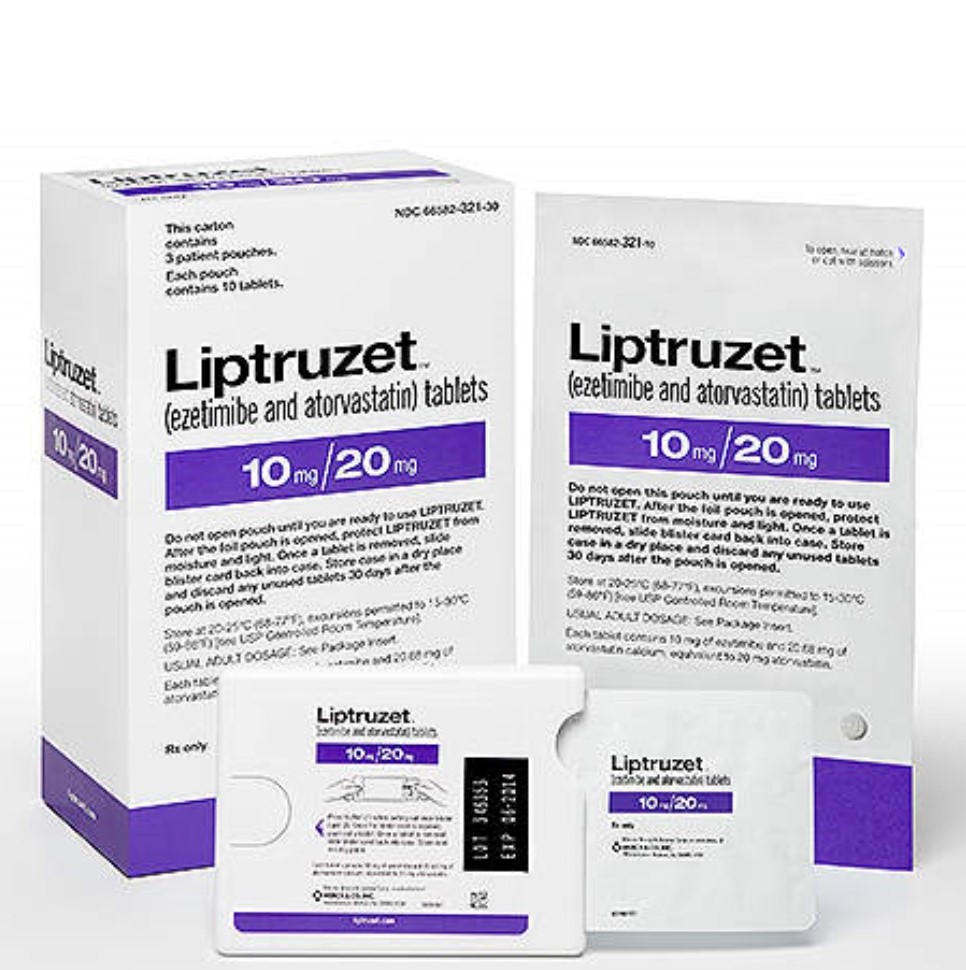
Source: (“Liptruzet (ezetimibe and atorvastatin) for the Treatment of Hyperlipidaemia,” n.d.)
What is Ezetimibe?
Classified as a cholesterol absorption blocker this is a type of medicine that works at the jejunal brush border primarily blocking the Nieman Pick C1 Like protein (NPC1), thus impairing enterocyte cholesterol absorption. Previous studies have demonstrated that Ezetimibe can significantly decrease Low-Density Lipoprotein plasma levels when used alone or with statin therapy (Phan, Dayspring, & Toth, 2012, p. 420).
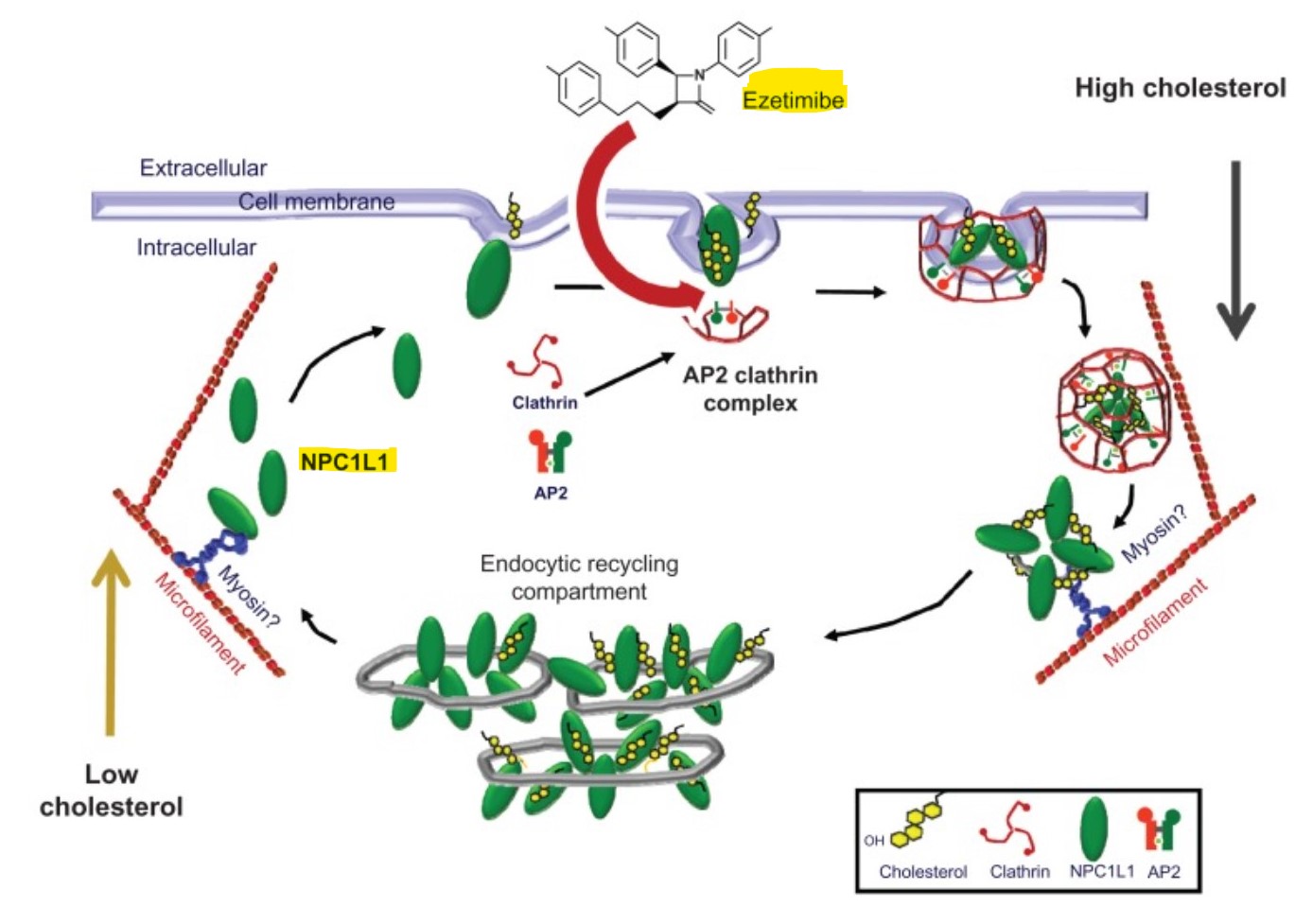
Why this combination?
Previous findings suggest that to reach a 50% reduction in LDL-C levels, combination therapy is necessary (McKenney et al., 2007, p. 433).
The advantage of using this combined therapy is that the ezetimibe portion of the medicine blocks the intestinal absorption of cholesterol while the statin counterpart impairs the cholesterol production in the liver (see Atorvastatin mechanism of action in the introductory section). Thus, having a greater impact on LDL-C reduction and the potential to have a better outcome in the treatment of cardiovascular disease (Husain, Hassan, Elmadhoun, & Ahmed, 2015, p. 1445).
Additionally, in order to attempt to decrease LDL-C levels, a double atorvastatin dosage is incorporated in the treatment of hypercholesterolemia. However, treatments with a maximum of 80 mg atorvastatin dose have shown some side effects such as musculoskeletal and limb pain, diarrhea, dizziness, and others. Studies in patients taking this drug suggest that one of the reasons for this side effects might be atorvastatin interference with lipid-soluble nutrients. Ezetimibe is a selective cholesterol absorption inhibitor and thus does not interfere with nutrient absorption. Its combination with statin appears to be effective and safe in decreasing LDL-C (Nutescu & Shapiro, 2003, p. 1465).
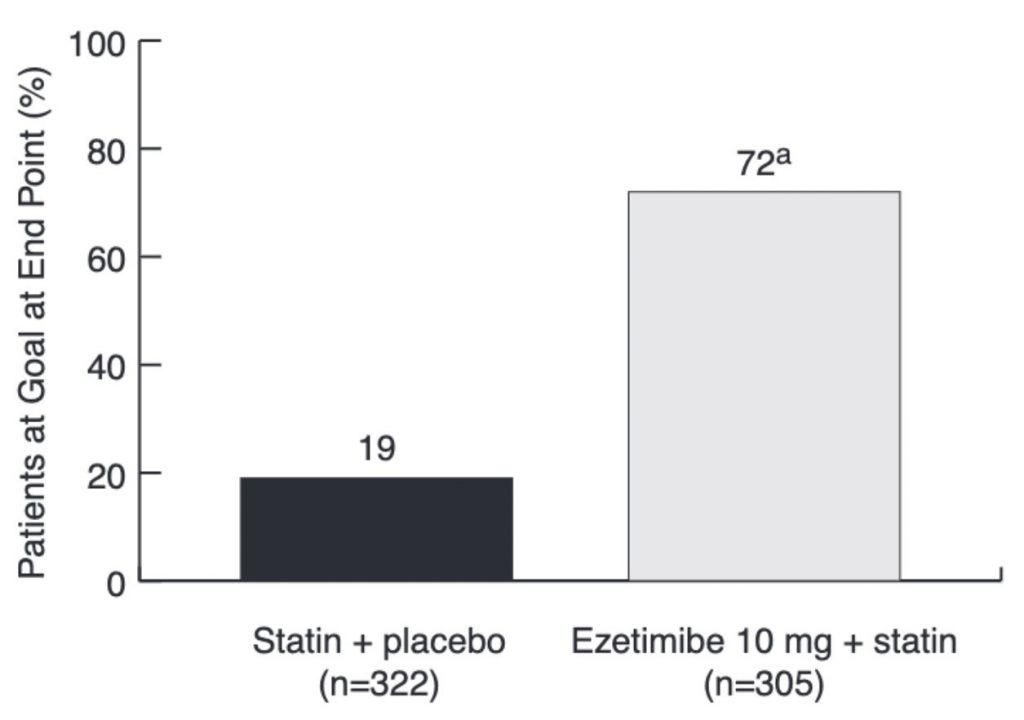
How do we know that the combination therapy works better than atorvastatin alone?
- 10mg Atorvastatin +10mg Ezetimibe better outcome than atorvastatin 20/40/80 mg when attempting to reach the recommended LDL-c levels recommended for patients with high risk of cardiovascular disease (Conard et al., 2008, p. 1491).
- In patients with Chronic Heart Disease (CHD) 10mg Ezetimibe + 40mg Atorvastatin > higher effectiveness than 80mg Atorvastatin monotherapy (Leiter et al., 2008, p. 1498).
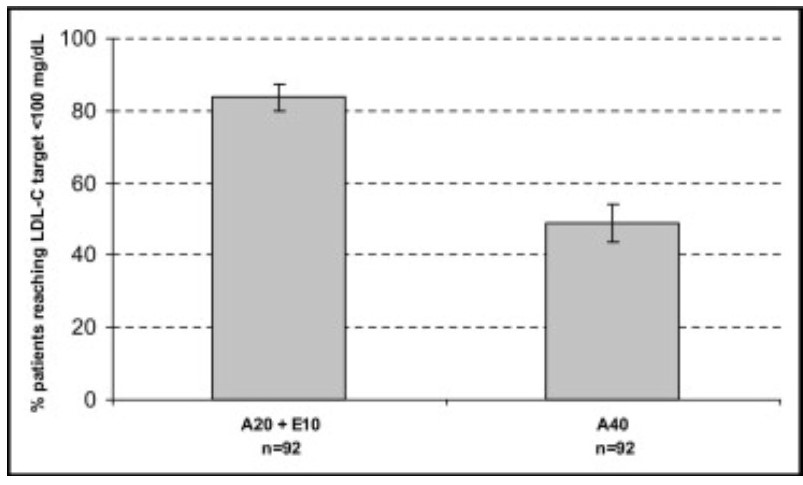
Figure 3. Results of patients from a study measuring patients’ LDL cholesterol (LDL-C) levels <100 mg/dl after six weeks. - One of the biggest limitations of this treatment, however, is that though different mechanisms, Atorvastatin and Ezetimibe have the potential of increasing circulating proprotein convertase subtilisin/kexin type 9 (PCSK9) (Dubuc et al., 2004, p. 1456). This enzyme increases the degradation of LDL receptors which are necessary for the absorption of LDL in the cells thus reducing its presence in the blood. Current studies are looking at the addition of PCSK9 inhibitors to this combination therapy, which has shown some promising results in mice experiments (Konrad, Troutt, & Cao, 2011).There are currently no studies assessing the renoprotective effects of Liprutzet on Chronic Kidney Disease (CKD). However, the Study of Heart and Renal Protection (SHARP) measured the effect of simvastatin, another drug in the statin family combined with Ezetimibe that proved to significantly reduce the incidence of major cardiovascular events in patients with advanced CKD (Baigent et al., 2011, p. 2185).
Atorvastatin Contraindications
Several different studies on ezetimibe and atorvastatin per se state that these drugs must be contraindicated:
- in pregnancy due to the risk of causing severe malformations in the fetus.
- Patients with ongoing liver disease.
- Patients with frequent alcohol consumption.

Source: (May 19 & Health, 2015) WHAT IS CADUET?
Amlodipine Dihydropyridine calcium channel antagonist (calcium channel blocker)
How do Ca+ channel blockers work?
Calcium channels are present on the cell surface. The amount of extracellular calcium is greater than the intracellular one. Upon a stimulus, these calcium channels open up and allow intracellular calcium concentration to increase leading to different responses depending on the cell and tissue. In the circulatory system, voltage-dependent calcium channels trigger contraction coupling on the skeletal, smooth and cardiac muscle. Calcium channel blockers (CCb) act upon those receptors to block this reaction in the heart having as a result decrease in heart rate and blood pressure.
Several studies have confirmed that a fixed-dose combination of the CCb amlodipine combined with atorvastatin has positive outcomes in the treatment of dyslipidemia and hypertension (Simonyi & Tamás, 2016).
- mechanism of action of Calcium Channel Blockers
- Amlodipine and Atorvastatin

